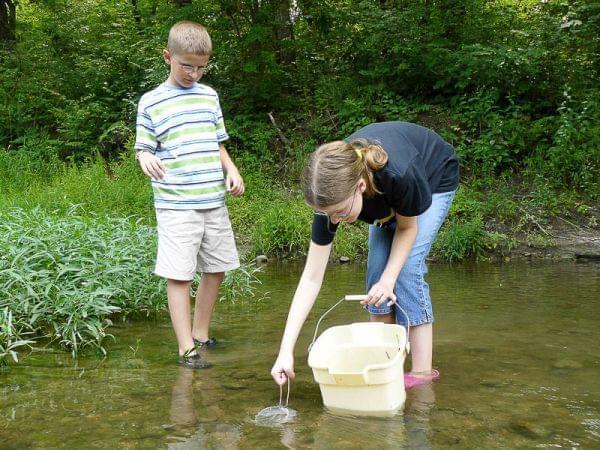Stand up for the Middle Fork

The author's children catching crayfish in the Middle Fork, from the archive. Rob Kanter
I value the Middle Fork of the Vermilion River for more reasons than I can count. On the Middle Fork, my wife and I enjoyed leisurely canoe trips and catching crayfish in the shallows with our children when they were young. On the Middle Fork, a friend and I taught ourselves to fish with fly rods (some decades ago), and over the years we’ve grown –dare I say it?—adept at catching smallmouth bass, as well as many of the other 57 species of fish that inhabit the river. On the Middle Fork, I first encountered North American river otters in the wild—up close and personal—after they were restored there in the mid 1990s, and I know where to find bald eagle nests. On the Middle Fork, I know that freshwater mussels, one of the most endangered groups of animals on Earth, have the conditions they need to thrive. On the Middle Fork, I learned to appreciate the variety of plant and animal life that’s supported by bottomland swamps and forests with a friend who stewards the Horseshoe Bottom Nature Preserve.
I could go on. In fact, I have gone on—each of the items on my list has been the focus of at least one commentary in the past, and each of those commentaries covered any number of topics that could have made another piece. Such are the wonders of a complex, natural system.
The Middle Fork was available for me to discover and explore when I came to live in central Illinois in the late 1980s because others, chief among them the founders of the group that’s today Prairie Rivers Network, fought for more than a decade to prevent construction of a dam that would have completely spoiled its rich natural character. That victory, one hopes, was sealed with the designation of the Middle Fork as a “National Scenic River” in May of 1989.
Another harm to the Middle Fork remains, however, and the time has come for people who value the river now to step up and fight for its health.
The harm, as you may know from news reports, is coal ash—3.3 million cubic yards of it—which is stored in three pits adjacent to the river not far north of Kickapoo State Recreation Area. Currently, pollution from this coal ash is both affecting groundwater at the site and seeping into the river itself. Worse still, the location of the pits next to the river makes them vulnerable to catastrophic failure, since they are well within the floodplain where it can be expected to meander over time.
Because of the harm being caused by the coal ash pollution, the national organization American Rivers has included the Middle Fork on its list of ten “Most Endangered Rivers” for 2018, and the state organization Prairie Rivers Network (where I’m a board member and long-time volunteer) has, with Earthjustice, filed a federal lawsuit accusing Dynegy of violating the Clean Water Act.
Now it’s your turn. This wrong can be righted, if Illinois EPA rejects Dynegy’s schemes to leave its coal ash in the floodplain. Check in with Eco-Justice Collaborative and Prairie Rivers Network to find simple, specific actions you can take to help.

